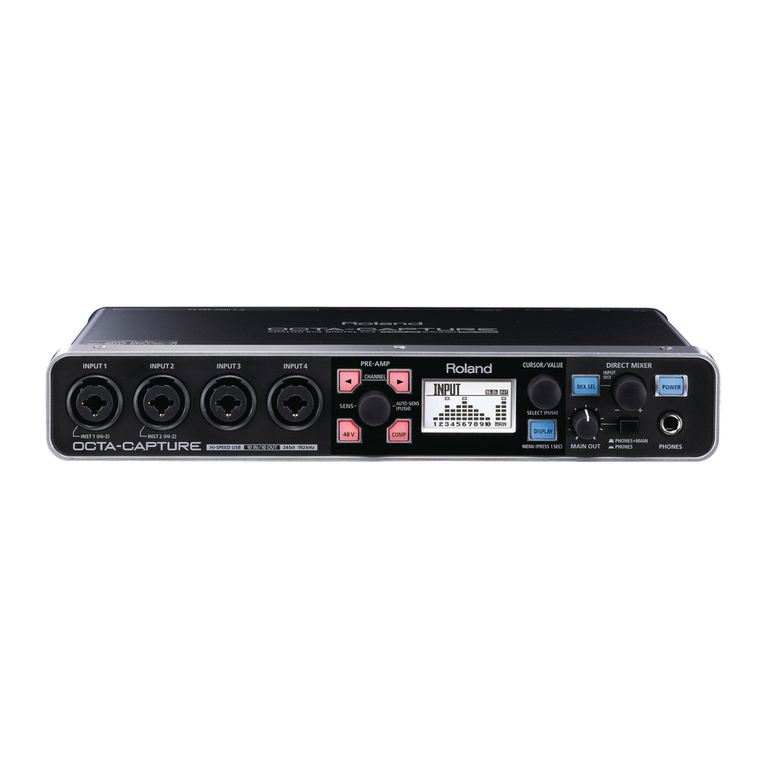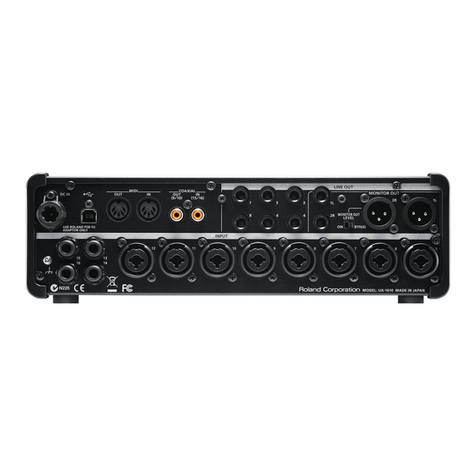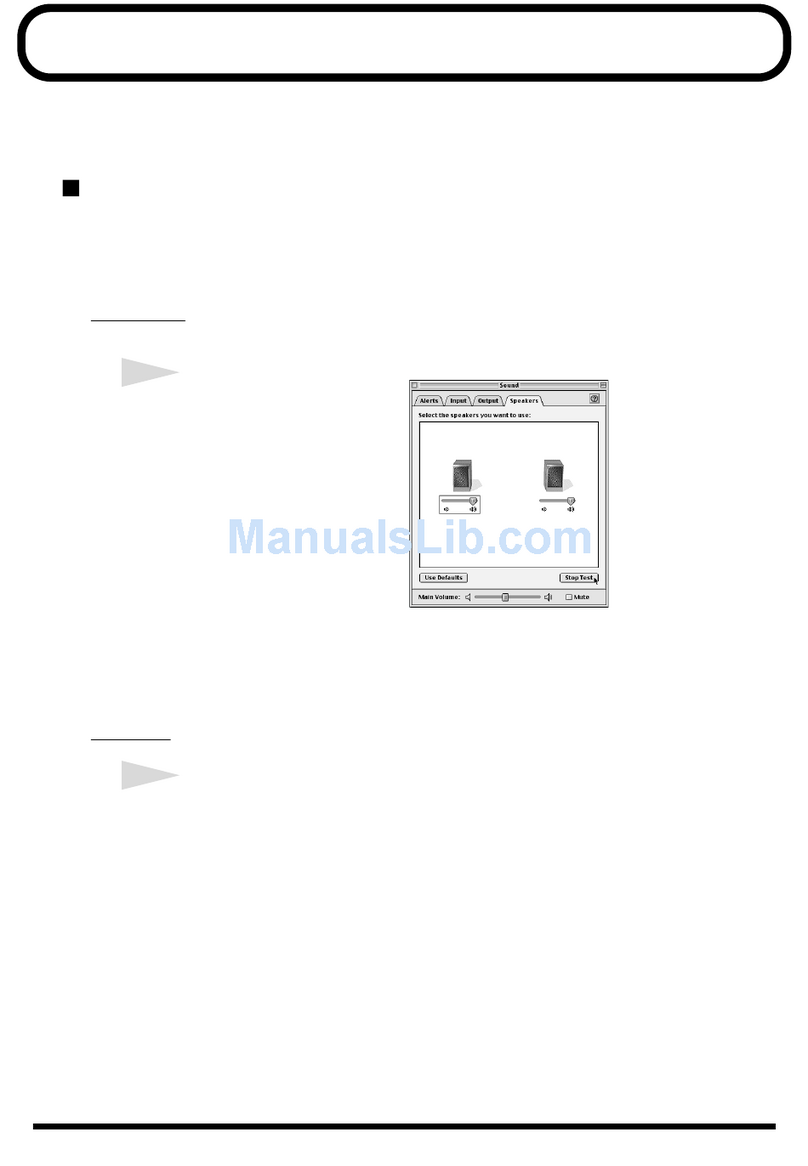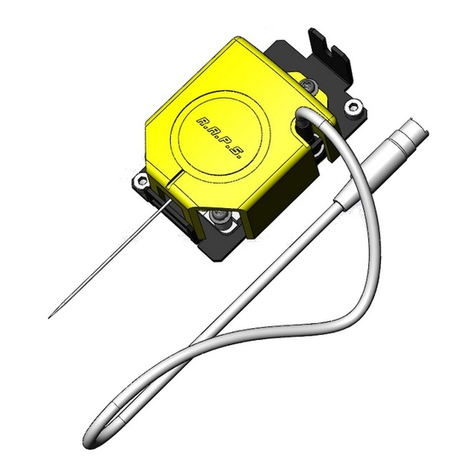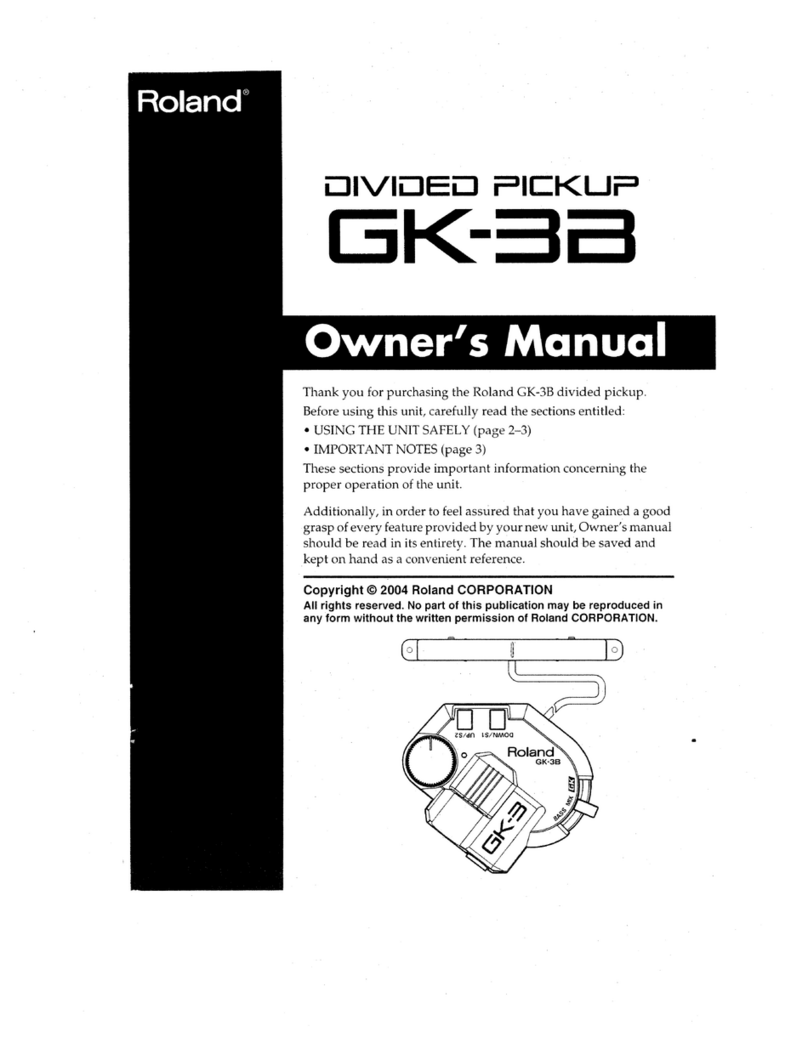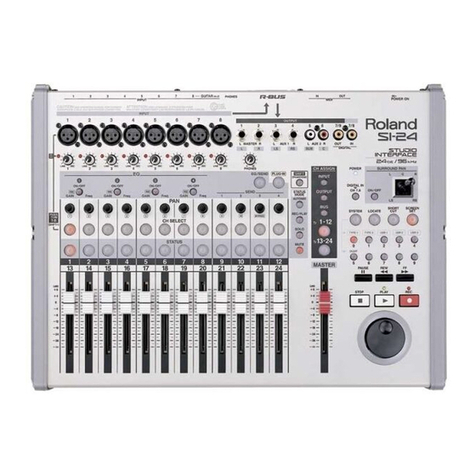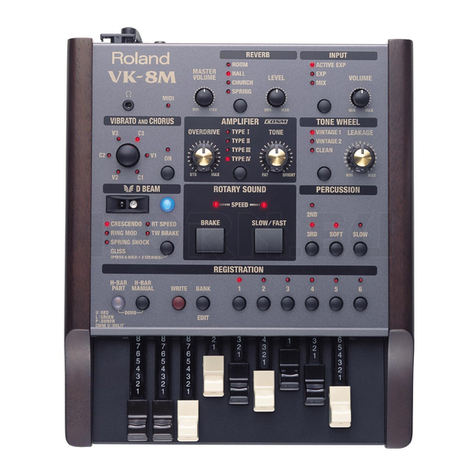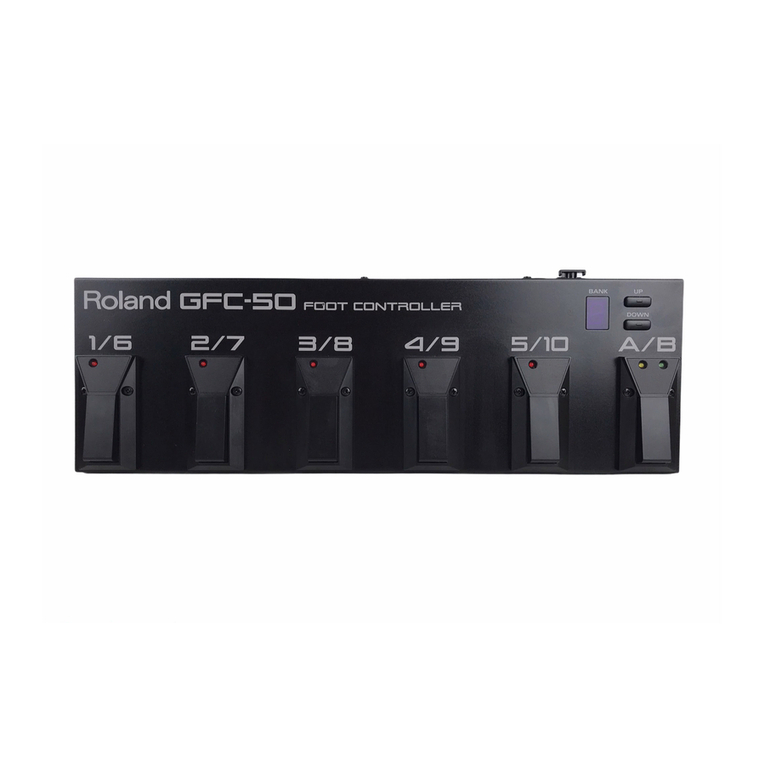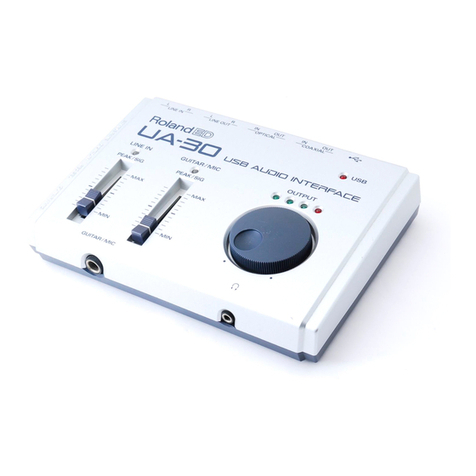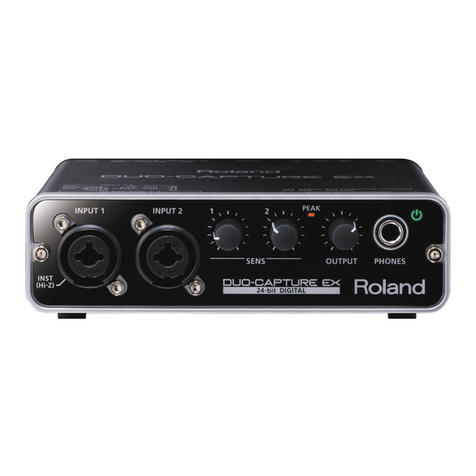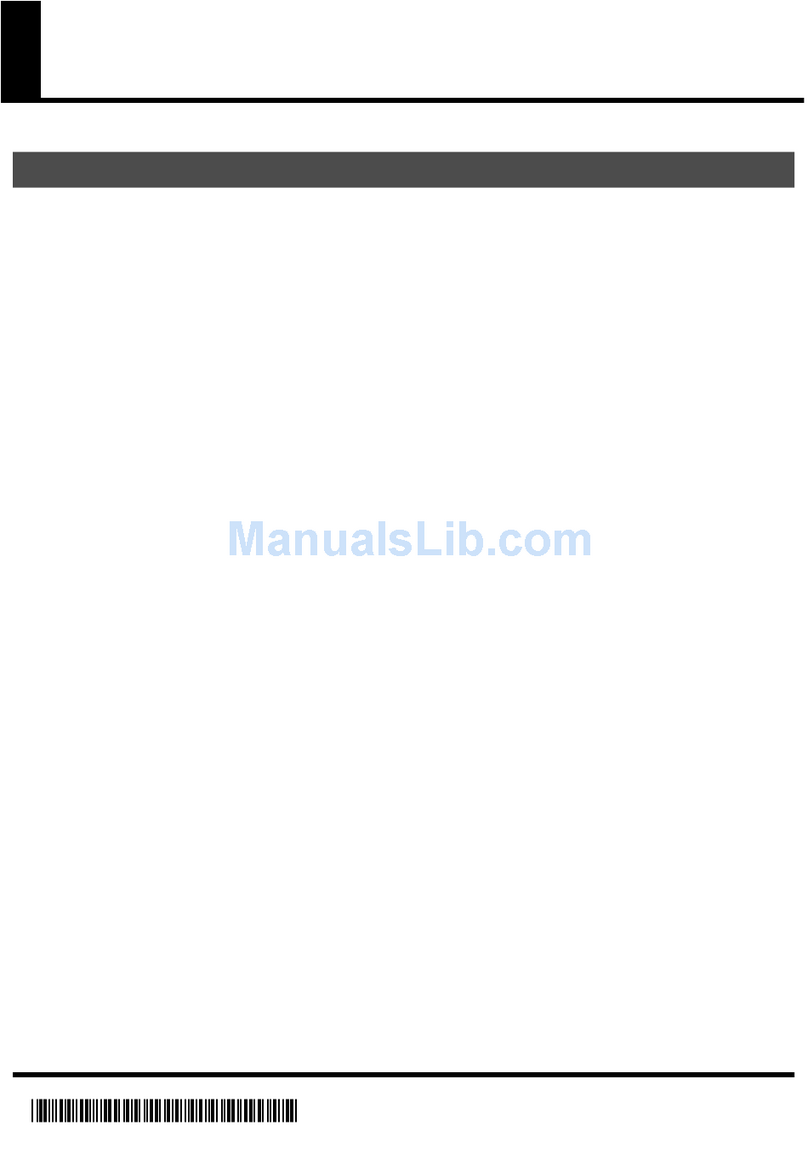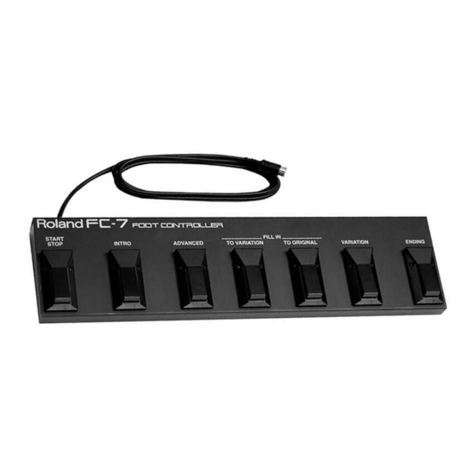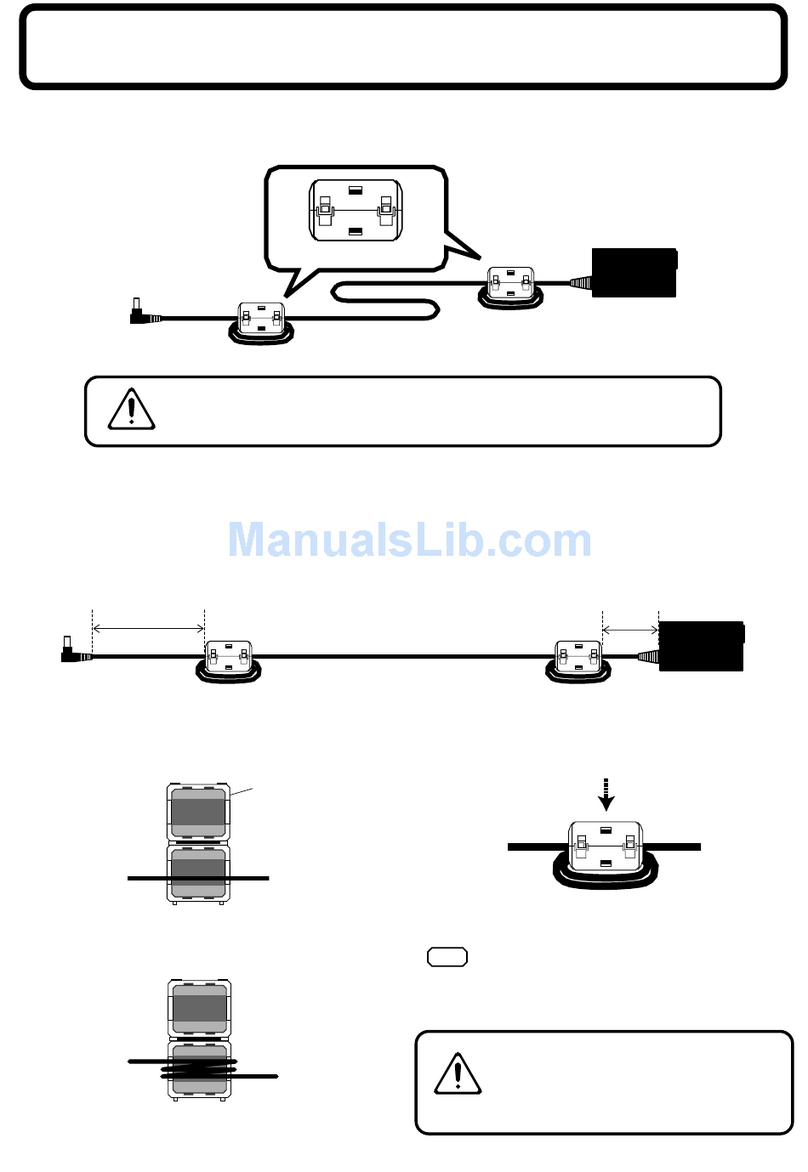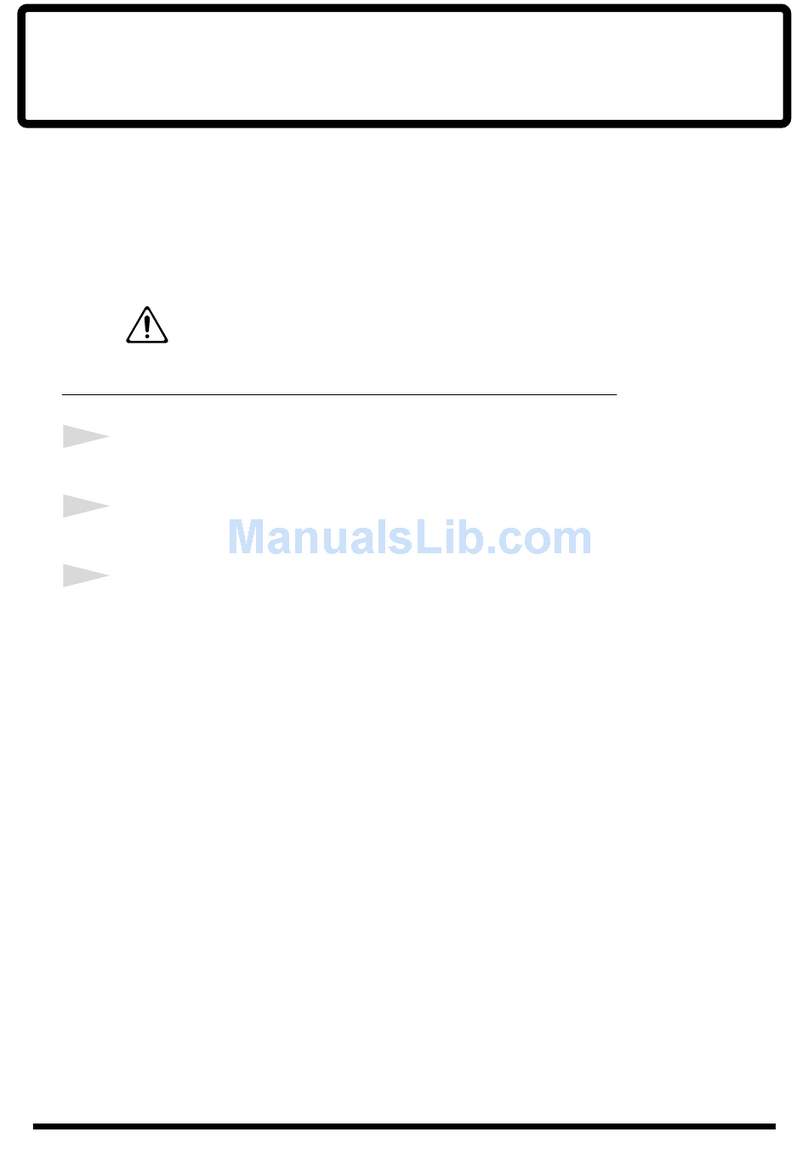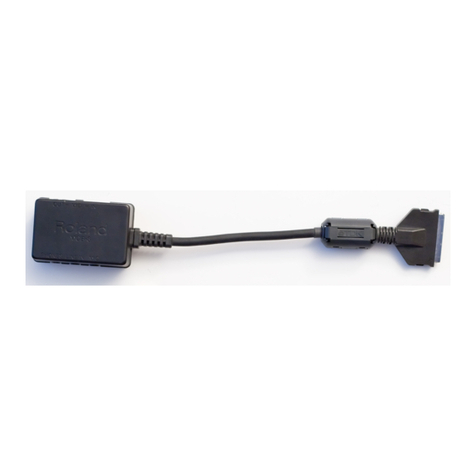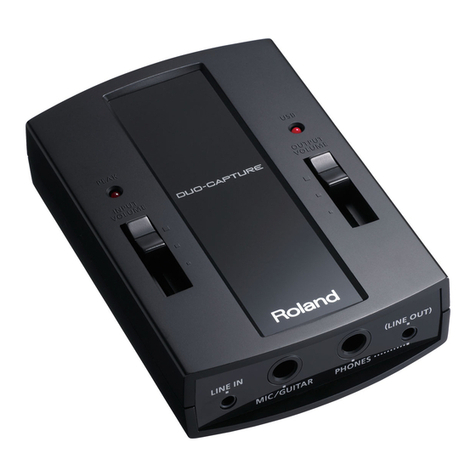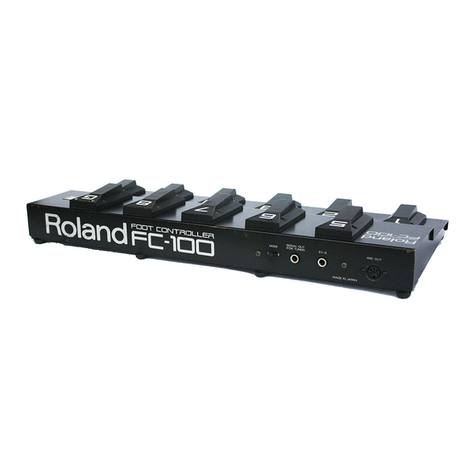
2
Thank you
for
purchasing the Roland
FC-1
OOMK
II
can
be
connected to any instrument featuring
an
RRC
(Roland Remote
Cantrall
IN
socket.
Please
read
this owner's manual carefully,
FEATURES
The
FC-1
OOMK
IT
is
agreatly enhanced version
of
the
FC-100
foot controller,
By
connecting the optional
RRC
TO
MIDI Converter
(RMC-lI. the FC-l00MK
IT
can
be used
as
an
all-purpose
MIDI foot controller, which provides pedal control over
transmission
of
any
Program Change to a connected
MIDI
devtce.
The FC-l0CMK
IT
allows you to make a whole range of
setting, including the MIDI channel,
and
Control Numbers
for the all-purpose pedal unit or expression pedal.
Using
MiD)
messages
(System
Exclusive),
the
settings
for,
and
operation
of
each
pedal
can
be
individually
controlled
from
an
external
MIDI
device.
CONTENTS
• IMPORTANT
NOTES
"""""",,,,,,,,,,,,,,,,,,,,,,,,,,,,,,,,,,,, 3
[jJ
Panel
Description
"""""""",,,,,,,,,,,,,,,,,,,,
4
I2J
How
to
use the FC-l00MK II
""""""""""",,,,,,,,,
""
5
1,
RRC
Foot
Pedal
Mode
""'"''''''''
'"''
"
""
,
'"
5
2,
MIDI Foot
Pedal
Mode
CiJ
RRC
Foot
Pedal
Mode
1,
Setup Examples
,""""
,
"",,"",,'"
2,
Mode Setting
""""''''
3,
Operation ",,',,'"
a.
Patch
Selection
b,
Control
Pedal
""
''''',,'''',,''
c,
Expression
Pedal
""
IAl
MIDI Foot
Pedal
Mode
1,
Setup Examples
2,
Mode Settings
"'"
a,
MIDI
Mix
On/Off
b,
MIDI Channei
,""'"
c,
OMNI On/Off
"""
d,
Control
Numbers,
3,
Restoring the Factory Preset Data
'"
4,
Operation
","",,""
a,
Patch
Selection"
b,
Control Pedal,,,,
c.
Expression
Pedal
llij Using Exclusive Messages
1.
Concerning
Modes,
2,
About the
RRC
Mode,
llil Reference
"","",,"
5
''',''
6
,,,"
6
..
............ 7
,7
, 7
,8
,8
,9
9
"'" 10
""'"
10
"'''"
10
""
10
",,"
10
""
13
",,'" 14
"'"
14
'"
"""
16
'"
, 16
,,","
17
"""
17
'"
18
",'"
19
1,
Table
of
data which
can
be
edited "'"
"'"''
"'"''
19
2,
Factory Preset Data,
3,
Troubleshooting
'"
About Roland Exclusive Messages
MIDI Implementation Chart
""
MIDI Implementation
• SPECIFICATIONS
'"'''''''',,'','',,'''',,'''
..
19
"
"'"
20
"""
21
,,,"
25
""
26
30
Please read
the
separate "MIDI" before reading this owner's manual.
Copyright © 1988 by ROLAND CORPORATION
All rights reserved, No part
of
this publication may be reproduced in
any form
without
thewritten permission
of
ROLAND CORPORATION,
